Displays
Using and Creating Public Educational Displays
The display called “Shattered Lives” caught the early and immediate attention of many November members. Mikki Norris, Chris Conrad and the late Virginia Resner collaborated to create a very large one; careful with every detail, it was a work of art. After viewing it, visitors were convinced the war on drugs was doing far more harm than any intended good.
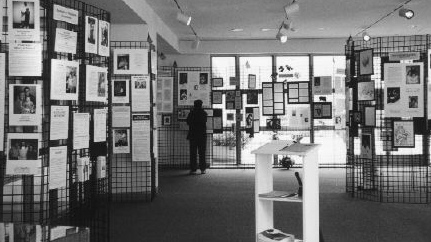
The “Shattered Lives” display (above) was featured in many prominent venues over a period of a few years, and the artists put their work in book form with the same name. The book and the artful display are still available here, and the innovative concept of featuring people affected by drug laws took hold.
When November organizers met to strategize in the Pacific Northwest early 1997, we decided that the created display must be weatherproof, serve as shelter, and fit on a rooftop carrier. Seasonal outdoor events where lots of people gathered -- fairs, music festivals, and community events in parks -- were places where members thought they could easily meet, teach and gather members.
Today, November volunteers and activists nationwide routinely work with staff to create “Family Albums" -- displays that take mere moments to set up, and one person can carry it easily.
With a good table-top display, a small group can create large community awareness, many communities have begun to tackle criminal justice issues with earnest. State coalitions form, this pressure can move the 111th Congress that convenes in January 2009, and a new presidential administration that takes office the same time.
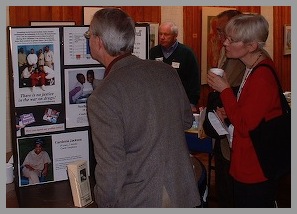
To do this work of organizing political power, you don't have to depend on large public events. Churches welcome social justice displays -- for a week or a month. Legal firms appreciate one for their common reception room where people facing legal charges can learn about your local grassroots work. Colleges and universities welcome our displays, too. Find a college club that might be interested in sponsoring an informational table you’ll help them put together.
Creating Your Own Display
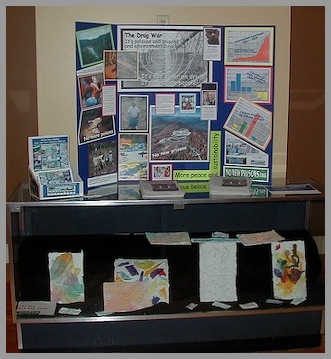
Center for Justice, Spokane, WA 2007
Your display should be neat, offer free information, be graphically appealing, with elements visible from a distance.
Artistically, make sure each element of your display adds to the overall 'statement' you wish to make. Don't stray from the subject too much.
Resist the temptation to crowd your display with too much. A cluttered appearance may turn potential onlookers away. If your display is set up on a table, don’t hide the display elements behind too much 'table clutter'. (See How to Create a Public Information Table.)
Put yourself in the shoes of someone who's never heard of the War on Drugs. What would catch your attention? We’ve learned that by simply looking at the faces of the prisoners of the drug war is enough to get people thinking.
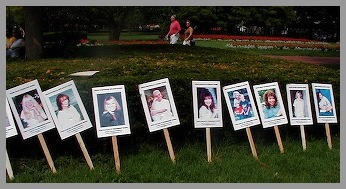
Prisoners of the Drug War
November “Family Album” displays are made with tri-fold posterboard, two feet by four feet by 1/8th inch thick. Posterboard is available at office supply or art stores. Black or dark colors provide a contrast with the white background of most of the display elements. A degree of weatherproofing can be added by laminating your pieces before gluing them to your display board. Build your display to last and endure numerous events, rallies and vigils.
Scattered among the graphical elements of displays (prisoner laminates, graphs, photos, etc.), we use simple text blocks containing pertinent quotes and dramatic paragraphs chosen from our literature. Try to strike a proper balance between words and pictures.
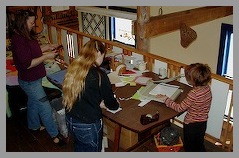
Local volunteers prepare displays
If you can’t muster the creativity or time to make displays of your own, November Coalition provides displays and fundraising opportunities to groups and individuals promising to use and return them when no longer needed.
